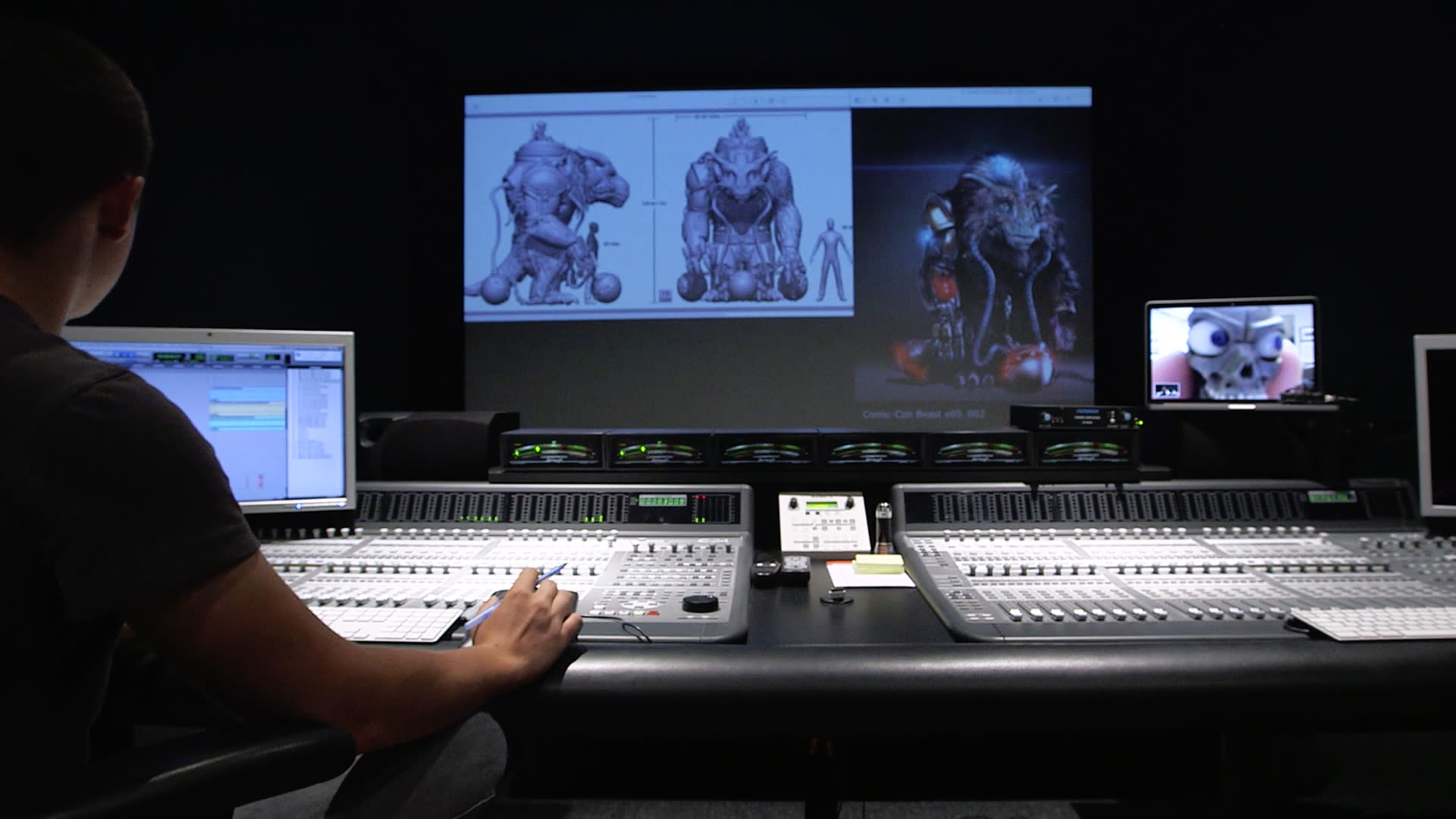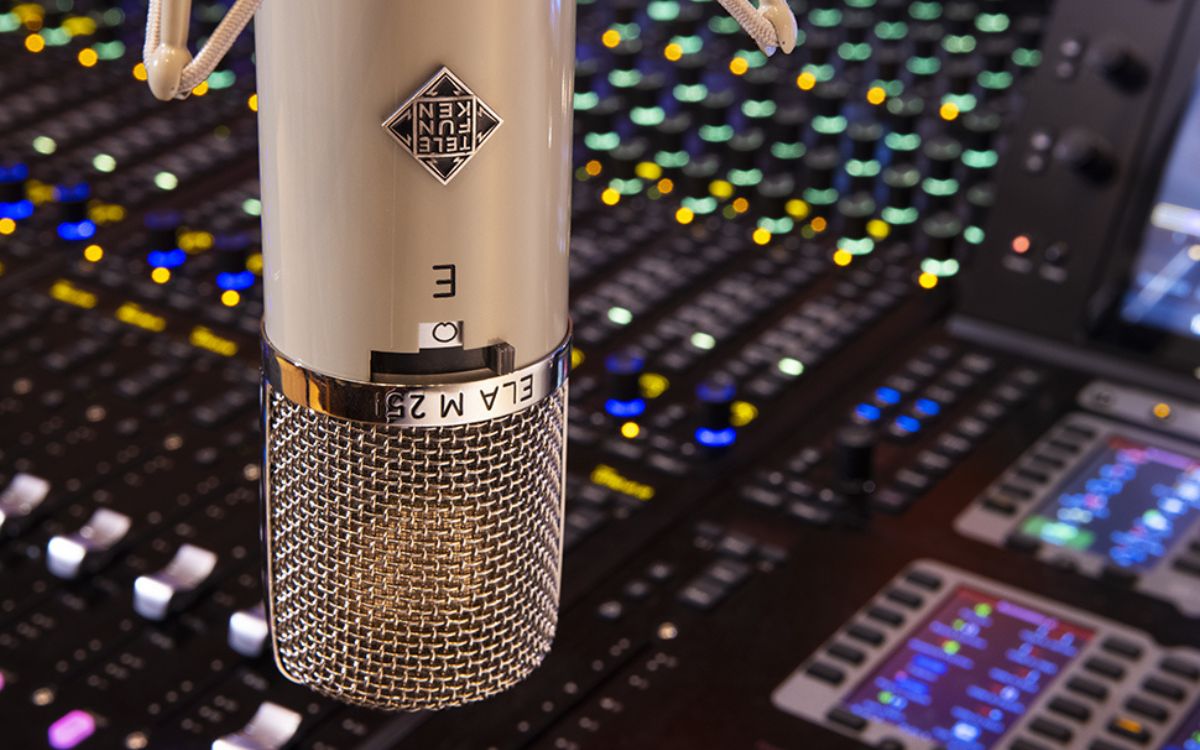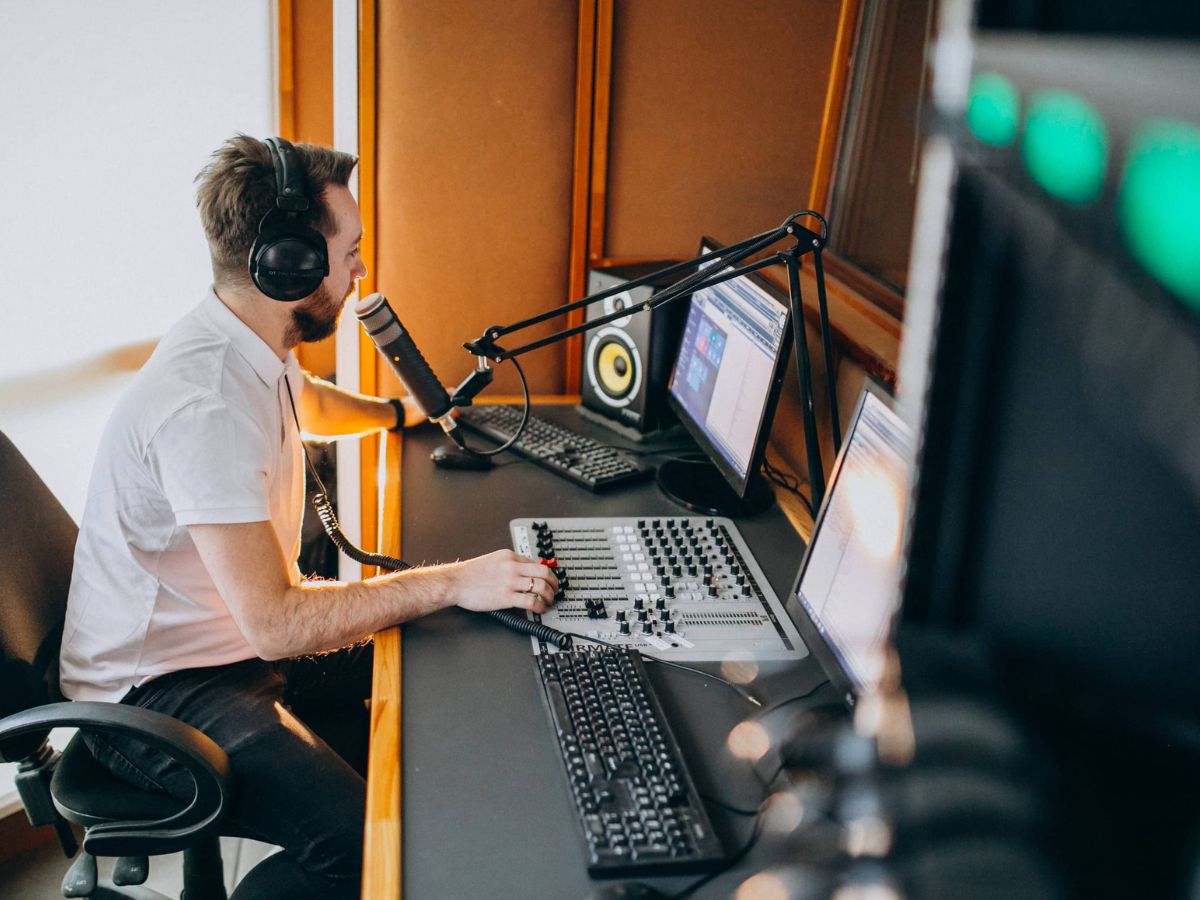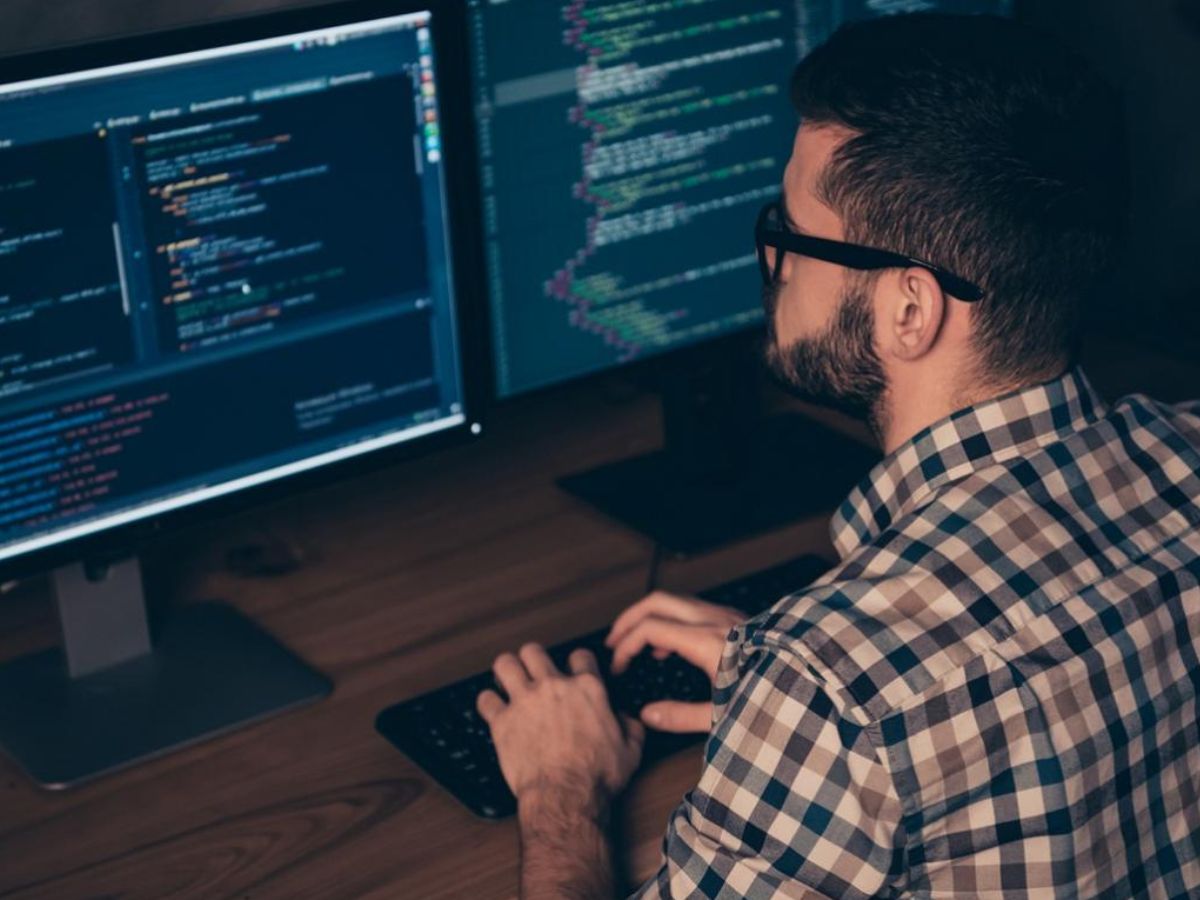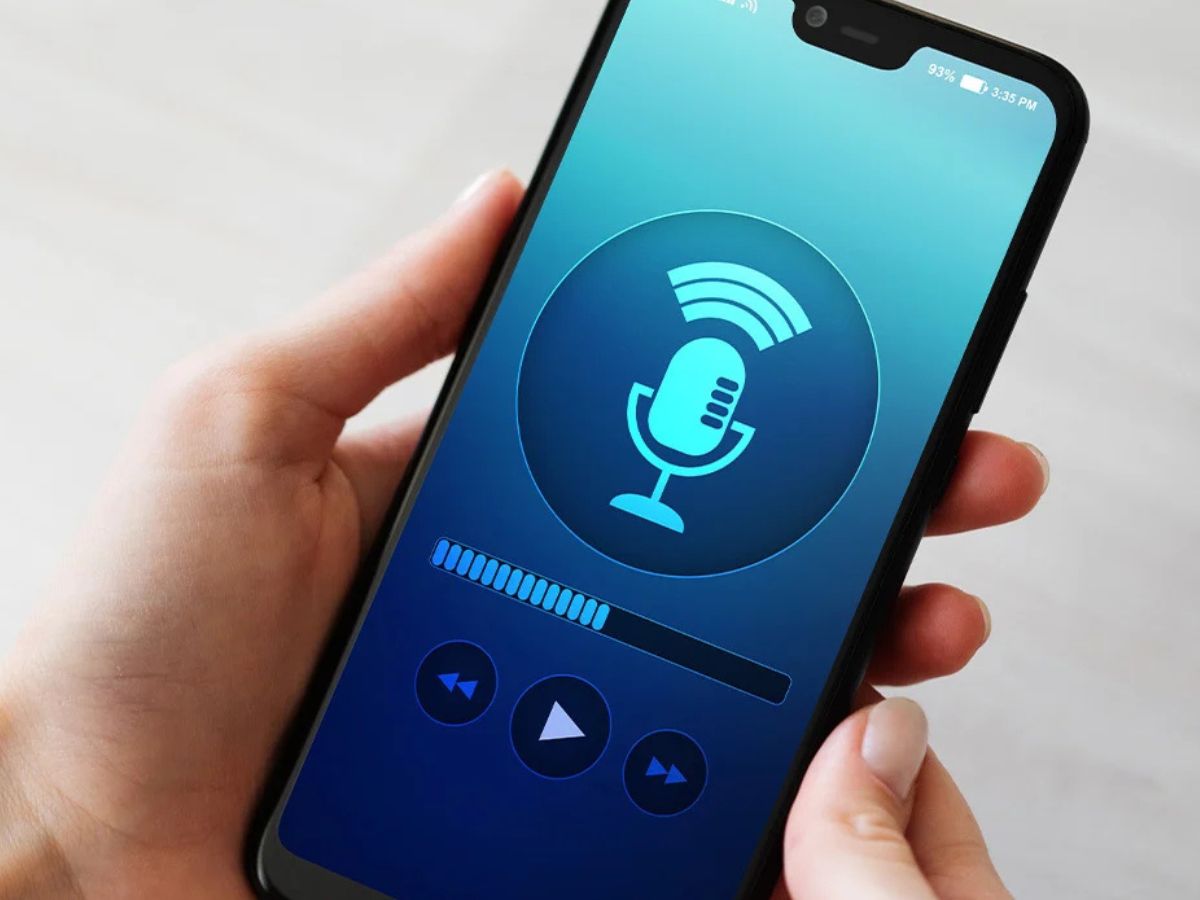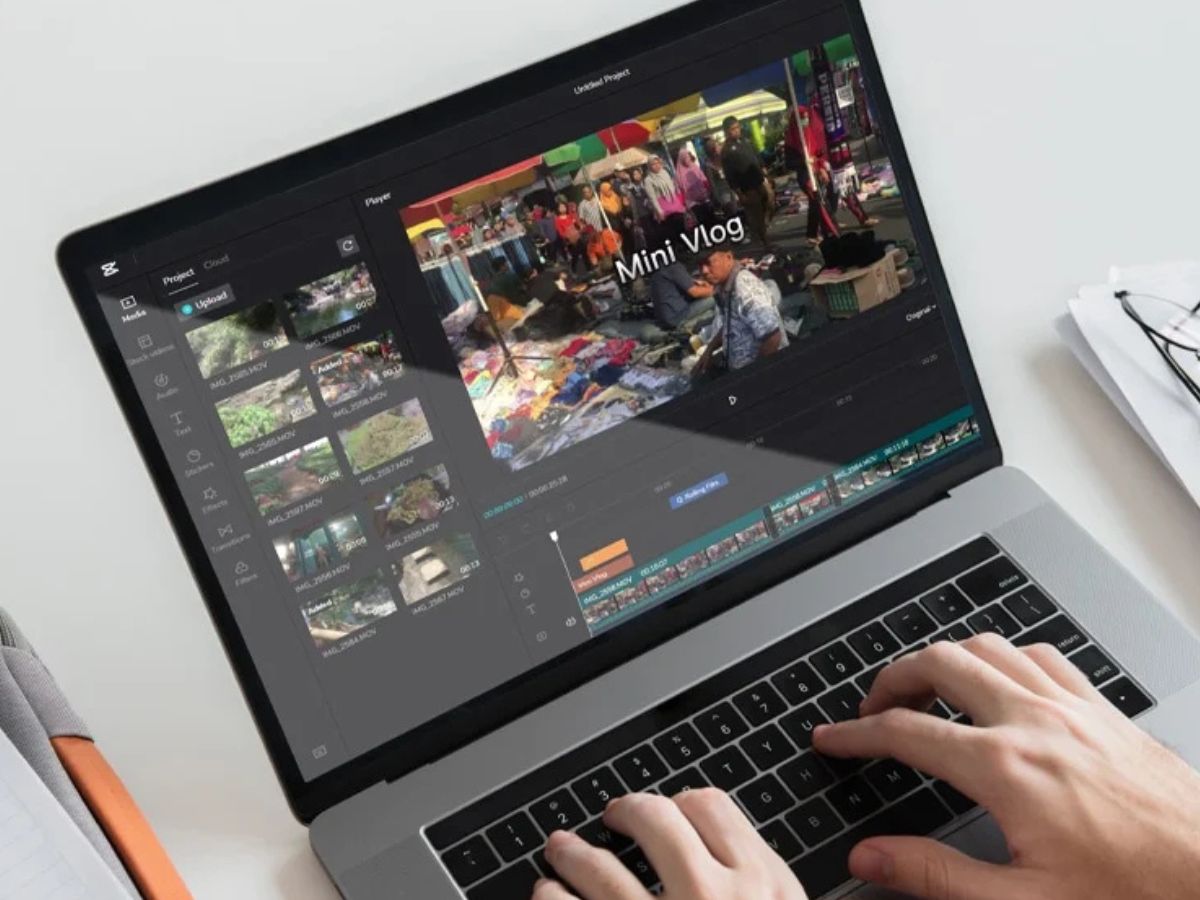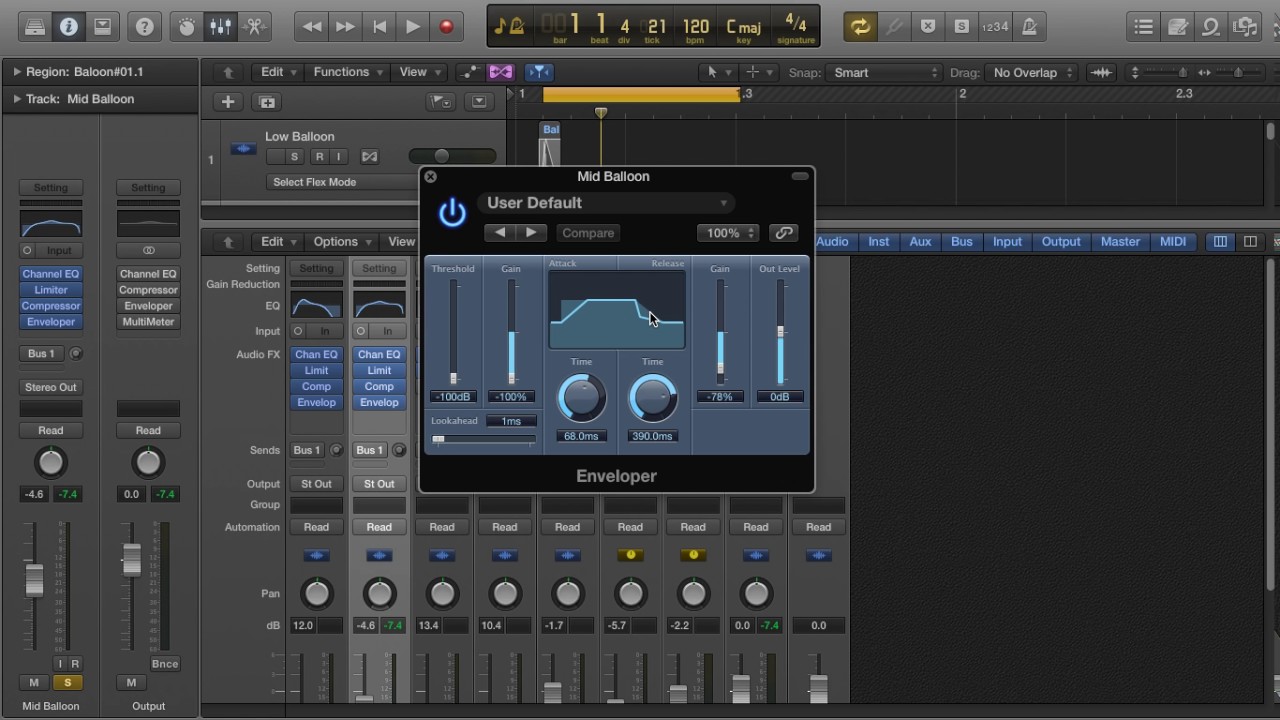Home>Production & Technology>Sound Effects>How Are Sound Effects Made
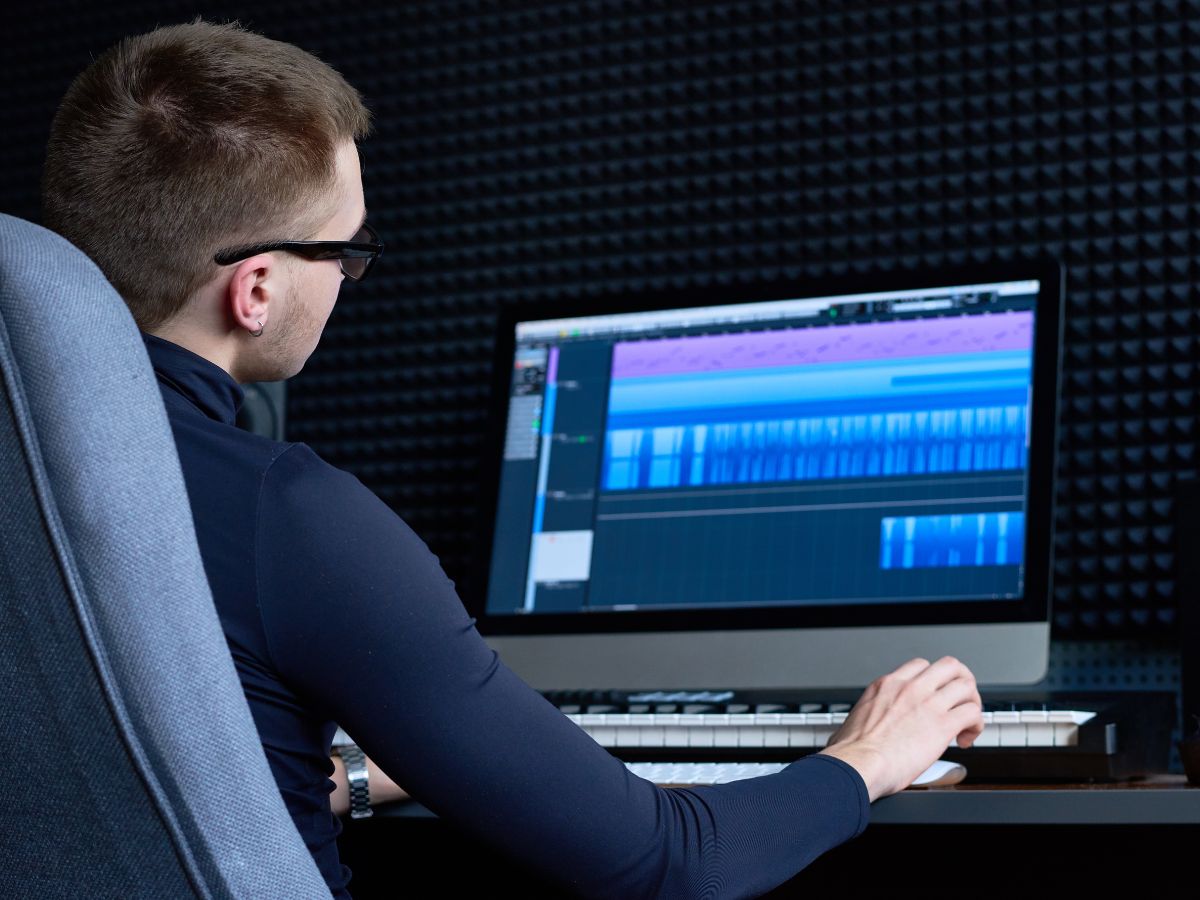

Sound Effects
How Are Sound Effects Made
Modified: January 22, 2024
Learn the art of creating captivating sound effects with our comprehensive guide. Discover techniques and tools used to produce realistic and immersive soundscapes.
(Many of the links in this article redirect to a specific reviewed product. Your purchase of these products through affiliate links helps to generate commission for AudioLover.com, at no extra cost. Learn more)
Table of Contents
Introduction
Sound effects play a crucial role in enhancing the audiovisual experience of various media forms, including films, television shows, video games, and even advertisements. From the thunderous roar of a crashing wave to the subtle rustling of leaves in a gentle breeze, sound effects help immerse us in the storytelling by creating a realistic and captivating auditory environment. But have you ever wondered how sound effects are made?
In this article, we will delve into the fascinating world of sound effects. We’ll explore the different techniques and processes involved in creating and designing these audio elements that bring stories to life. Whether you’re a sound enthusiast or simply curious about the behind-the-scenes magic, this article will provide you with a deeper understanding of the artistry and technology involved in sound effects production.
Sound effects can be broadly categorized into two main types: practical and created. Practical sound effects are recorded directly from the source, such as the sound of a door creaking or glass breaking. Created sound effects, on the other hand, are composed and designed using a variety of tools and techniques to recreate or enhance specific sounds.
Sound effects are often created by professionals known as sound designers, who specialize in manipulating audio to achieve desired results. They utilize their creativity, technical knowledge, and a wide array of tools to record, edit, and mix different elements to create unique and evocative sounds.
Throughout this article, we will explore the various methods used to produce sound effects, including the practice of Foley artistry, digital sound design, and the recording techniques employed. We will also discuss the tools and software commonly used in the industry to create and manipulate sound effects.
So, get ready to uncover the secrets and techniques behind the mesmerizing soundscapes that accompany our favorite movies, shows, and games. Let’s dive into the world of sound effects and discover how these audio elements are brought to life.
Understanding Sound Effects
Before we dive into the creation process, let’s first understand what sound effects actually are. Sound effects are audio elements that are used to enhance or create a specific auditory experience. They can be natural sounds, such as footsteps or bird chirping, or synthetic sounds, like laser blasts or magical spells. Sound effects serve several purposes, including adding realism, setting the mood, and creating an immersive experience for the audience.
Sound effects can be categorized into different types, including environmental, Foley, and designed effects. Environmental effects are recordings of real-world sounds, such as traffic noises, rainfalls, or crowd chatter. These sounds are typically used to create a realistic background ambiance.
Foley effects, on the other hand, are sounds created by Foley artists who manually recreate real-world noises. This can involve actions like footsteps, door slams, or cloth movements. Foley artists use various props and surfaces to recreate these sounds, adding a human touch to the audio experience. Foley effects are essential in capturing the small details that can greatly enhance the realism of a scene.
Designed effects are sounds that are entirely created or manipulated digitally. This can involve synthesizing sounds, combining different audio elements, or altering recordings to achieve a desired effect. These effects are often used in sci-fi or fantasy genres to create otherworldly or exaggerated sounds that cannot be captured naturally.
Understanding the different types of sound effects is essential for sound designers, as it helps them determine which techniques and tools to use for a specific project. By choosing the right sound effects, they can effectively communicate emotions, intensify action sequences, and transport the audience into the world of the story.
In the next sections, we will explore the various methods and techniques used to create these sound effects. From the art of Foley to the digital manipulation of audio, we will uncover the intricate process of sound design and gain insights into the world of audio storytelling.
Foley Artistry
Foley artistry is a unique and essential aspect of sound effects creation. It involves the art of manually recreating and recording everyday sounds to enhance the audio experience of a film or other forms of media. Foley artists use a variety of props and surfaces to mimic sounds that would be difficult to capture during the original filming process.
The art of Foley originated in the early days of cinema when sound was recorded separately from the visuals. Jack Foley, a pioneer in the field, developed techniques to sync sound effects with on-screen actions. Since then, Foley artistry has become an integral part of sound design, adding depth and realism to the audio elements of a production.
To create Foley effects, artists use a Foley stage, which is a specially designed studio equipped with various surfaces and props. These surfaces include different types of flooring, such as wood, concrete, or gravel, which are used to recreate footsteps. Additionally, props like doors, keys, clothes, and even vegetables are used to mimic a wide range of sounds.
The process of Foley artistry involves meticulously studying the visuals of a scene and determining the specific sounds needed to enhance it. The Foley artist then performs the actions and movements required, such as walking, interacting with objects, or handling props, while being recorded. The resulting audio is then synchronized with the visual elements of the scene.
One of the key skills of a Foley artist is the ability to create variations of sounds to match different contexts and intensities. For example, they can produce different types of footsteps to reflect the gait or footwear of a character. They can also simulate the sound of rain by using various materials like sponges or rice to replicate the droplet sounds hitting different surfaces.
Being a Foley artist requires creativity, attention to detail, and a keen ear for capturing subtle nuances. It involves experimenting with different techniques and props to achieve the desired sound. The final outcome is a collection of unique and tailor-made sounds that enhance the realism of a production.
Nowadays, Foley artistry has evolved along with technological advancements. With the help of digital recording and editing tools, Foley artists have more flexibility and control over the sounds they create. This allows them to refine and fine-tune the effects to perfectly match the visuals and storytelling.
Foley artistry is a collaborative process that often involves close coordination with the sound designer, director, and editors. By working together, they ensure that the sounds seamlessly integrate into the overall audio landscape, creating a truly immersive experience for the audience.
Digital Sound Design
In addition to Foley artistry, digital sound design plays a crucial role in the creation of sound effects. With the advancements in technology and the availability of powerful software tools, sound designers have an extensive range of options to manipulate and create audio elements digitally.
Digital sound design involves the use of software applications specifically designed for sound editing, synthesis, and manipulation. These tools allow sound designers to craft unique and custom-made sound effects that cannot be easily captured in the real world.
One common technique used in digital sound design is sound synthesis, where sounds are generated electronically using oscillators, filters, and other signal processing techniques. Synthesis allows sound designers to create futuristic, otherworldly, or even abstract sounds that can add a distinct flavor to a scene.
Another aspect of digital sound design is the manipulation of recorded audio samples. Sound designers can modify and transform recordings through processes like pitch shifting, time stretching, and granular synthesis. These techniques allow for the stretching or compressing of sounds, altering their pitch or timbre, and creating unique variations of audio elements.
Furthermore, digital sound design provides the flexibility to layer multiple sound sources and apply various effects and processing techniques to achieve the desired result. This can involve using equalizers, compressors, reverbs, and other effects to shape and enhance the sound. By carefully selecting and manipulating different sonic elements, sound designers can create rich and immersive audio environments.
The use of digital sound design extends beyond just creating standalone sound effects. It also involves crafting soundscapes and ambiance that contribute to the overall atmosphere of a scene or a location. This can be achieved by combining different layers of sound effects, music, and recorded environmental sounds to create a cohesive and evocative audio backdrop.
It’s important to note that digital sound design still requires a strong understanding of sound principles and techniques. Sound designers need to have a keen ear and a sense of artistic vision to effectively utilize these tools. The goal is to create sounds that not only blend seamlessly with the visuals but also evoke the desired emotions and enhance the narrative of the story.
In recent years, the growth of virtual reality (VR) and augmented reality (AR) has opened up new possibilities for digital sound design. With these immersive technologies, sound designers can create audio experiences that fully immerse the audience in a virtual environment. By using binaural audio techniques, spatial sound positioning, and dynamic soundscapes, they can transport the listener into a virtual world where sound plays a pivotal role.
With the continuous advancement of technology, digital sound design continues to push the boundaries of what is possible in sound effects creation. The combination of creativity, technical knowledge, and powerful tools allows sound designers to unleash their imagination and create captivating audio experiences that enhance the storytelling process.
Recording Techniques for Sound Effects
Recording sound effects is a fundamental step in sound design. It involves capturing real-world sounds that can enhance the audio experience and bring a sense of authenticity to a production. To achieve high-quality recordings, sound designers employ various techniques and utilize specialized equipment.
One common recording technique for sound effects is field recording. Field recording involves capturing sounds outside of a controlled studio environment. Sound designers venture into specific locations or environments to capture sounds that cannot be replicated in a studio setting. This could include recording footsteps in a forest, capturing the ambient sounds of a bustling city street, or even recording animal calls in the wild.
When recording sounds in the field, sound designers use high-quality portable recorders and microphones to capture the nuances and details of the sounds. They may employ different microphone types, such as omnidirectional, shotgun, or stereo microphones, depending on the specific sound they want to capture and the environmental conditions.
Another recording technique used for sound effects is close-miking. This involves placing the microphone in close proximity to the sound source to capture a detailed and focused recording. Close-miking is often used for capturing specific sounds like tapping, scraping, or handling objects, where capturing the subtle details is crucial.
Sound designers also utilize specialized techniques like contact microphones or hydrophones to capture sounds that are difficult to record using traditional microphones. Contact microphones are attached directly to surfaces or objects, allowing for the recording of vibrations and resonances. Hydrophones, on the other hand, are used to capture underwater sounds, making them ideal for recording underwater scenes or marine life.
When recording sound effects, it’s important to consider the signal-to-noise ratio. Sound designers aim to capture clean and clear recordings, free from unwanted background noise or interference. They may choose to record during quiet periods, use sound blankets or shields to minimize unwanted noise, or employ noise reduction techniques during post-production to enhance the quality of the recordings.
Sound designers often create sound libraries, which are collections of recorded sound effects that can be used and reused in various projects. These libraries provide a valuable resource for sound designers, saving them time and effort in the creation of unique sound effects.
Ultimately, the goal of recording sound effects is to capture high-quality audio that can seamlessly blend with the visuals and enhance the storytelling. Sound designers employ their technical expertise and creative vision to choose the right recording techniques and equipment that best represent the desired soundscape.
With advancements in technology, sound designers now have access to portable and high-resolution recording equipment, allowing them to capture sound effects in even more challenging environments. These recordings, when combined with Foley artistry and digital sound design, contribute to the richness and authenticity of the overall audio experience.
Editing and Mixing Sound Effects
Once sound effects have been recorded or created, the next step in the sound design process is editing and mixing. Editing involves refining and organizing the recorded or synthesized sound effects, while mixing involves blending these effects with other audio elements to create a cohesive and balanced final audio mix.
During the editing process, sound designers carefully review and select the best takes and performances from their recorded or created sound effects. They trim, clean up, and arrange the files to ensure they fit seamlessly into the desired scenes or moments in the production. This may involve removing unwanted noise, adjusting the timing or length of the effects, or adding fades for smooth transitions.
In addition to editing individual sound effects, sound designers may also layer multiple effects together to create more complex and dynamic sounds. They experiment with different combinations and adjust the volume levels, panning, and spatial positioning of each effect to enhance the desired impact and create depth in the audio mix.
Mixing is the process of combining all the audio elements, such as dialogue, music, and sound effects, into a cohesive and balanced mix. Sound designers carefully adjust the levels, frequencies, and spatial positioning of each element to ensure they complement each other and create the desired emotional impact.
During the mixing stage, sound designers may use equalizers, compressors, and other audio processing tools to shape the tonal balance and dynamics of the sound effects. They may also apply spatial effects like reverbs and delays to create a sense of depth and space in the audio mix.
One important aspect of sound effects editing and mixing is paying attention to the overall audio landscape of a production. Sound designers collaborate with directors and other members of the post-production team to ensure that the sound effects blend seamlessly with the visuals and other audio elements. They work to create a sonic environment that supports the narrative and enhances the viewer’s experience.
In recent years, immersive audio technologies like Dolby Atmos have become popular, allowing for even more precise control over the spatial positioning and movement of sound effects. Sound designers can place objects and elements in a 3D space, creating a more immersive and realistic audio experience for the audience.
Ultimately, the editing and mixing of sound effects require technical expertise, a keen ear for detail, and a strong understanding of storytelling. Sound designers aim to create a sound mix that enhances the visuals, creates an emotional impact, and transports the audience into the world of the story.
Through meticulous editing and thoughtful mixing, sound designers bring together all the sound elements to create a compelling and immersive audio experience that elevates the overall production to new heights.
Popular Tools and Software for Sound Effects Creation
With advancements in technology, sound designers have access to a wide range of tools and software that assist in the creation and manipulation of sound effects. These powerful tools streamline the sound design process and offer a plethora of features and capabilities. Let’s explore some of the popular tools and software used by sound designers:
1. Pro Tools: Pro Tools is a widely used digital audio workstation (DAW) that offers a comprehensive set of tools for recording, editing, and mixing sound effects. It provides a robust platform for sound designers to organize and manipulate their sound files, apply effects, and mix them with other audio elements.
2. Sound Forge: Sound Forge is a professional audio editing software that allows sound designers to precisely edit and enhance sound effects. It offers a wide range of editing tools, including waveform editing, noise reduction, and audio restoration, making it a go-to choice for detailed audio manipulation.
3. Native Instruments Kontakt: Kontakt is a software sampler that is frequently used for sound effects creation. Sound designers can load and manipulate sampled sounds, apply various effects, and create unique soundscapes. Kontakt is known for its extensive library of high-quality virtual instruments and its flexibility in shaping and sculpting sounds.
4. Synthesizers: Synthesizers, both hardware and software-based, are popular tools for creating synthetic sound effects. Software synthesizers like Native Instruments Massive, Xfer Records Serum, and Arturia Pigments offer a wide range of synthesis techniques and sound-shaping capabilities, allowing sound designers to create futuristic, surreal, and otherworldly sounds.
5. iZotope RX: iZotope RX is a powerful audio repair and restoration software that is widely used in sound design. It helps sound designers clean up and remove unwanted noise, clicks, hums, and other imperfections from recordings, ensuring the highest audio quality for sound effects.
6. Virtual Foley Systems: Virtual Foley systems like UVI Falcon and Audiokinetic’s Wwise offer a unique and modern approach to Foley artistry. They provide libraries of virtual props and surfaces, allowing sound designers to simulate the sounds of footsteps, clothes rustling, and object interactions with ease and flexibility.
7. Field Recording Tools: For capturing real-world sounds, sound designers make use of portable recorders like the Zoom H4n or Tascam DR-40X, along with a variety of high-quality microphones. These tools allow sound designers to capture sounds on-location and maintain the authenticity and realism of their sound effects.
These are just a few examples of the popular tools and software used in the creation of sound effects. Sound designers often employ a combination of these tools, depending on their specific needs and the requirements of the project. The key is to leverage these tools to unleash creativity and bring imagination to life through captivating soundscapes.
Conclusion
Sound effects are an integral part of the audiovisual experience, enhancing storytelling and immersing the audience in a captivating auditory world. Whether it’s the subtle sound of footsteps, the explosive roar of an engine, or the magical tinkling of a spell, sound effects bring depth, realism, and emotion to various media forms.
In this article, we have explored the artistry and technology behind sound effects creation. From the intricacies of Foley artistry to the limitless possibilities of digital sound design, we have uncovered the techniques and tools used by sound designers to craft unique and impactful soundscapes.
Through the practice of Foley artistry, sound designers manually recreate real-world sounds, adding a human touch to the audio experience. Meanwhile, digital sound design empowers them to create and manipulate sounds that transcend the boundaries of the physical world, opening up endless creative possibilities.
Recording techniques allow sound designers to capture real-world sounds or synthesize them digitally, utilizing specialized equipment and exploring various environments. The editing and mixing stages refine and blend the sound effects together, creating a cohesive audio mix that enhances the storytelling experience.
With the help of popular tools and software such as Pro Tools, Kontakt, and synthesizers, sound designers have access to powerful resources that facilitate their creative process and enable them to shape and sculpt sound in extraordinary ways.
In conclusion, sound effects are an essential aspect of the audiovisual landscape, providing depth, realism, and emotion to various forms of media. Sound designers, with their artistic vision and technical expertise, play a crucial role in creating and manipulating these effects, taking audiences on an immersive journey through the power of sound.
As technology continues to advance, we can expect sound effects to become even more intricate and immersive, further enhancing the audiovisual experience. So, the next time you watch a movie, play a video game, or listen to a podcast, take a moment to appreciate the incredible work that goes into crafting the sound effects that ignite our senses and bring stories to life.

